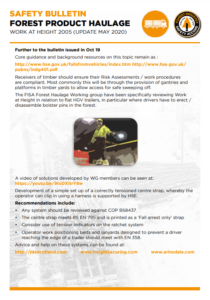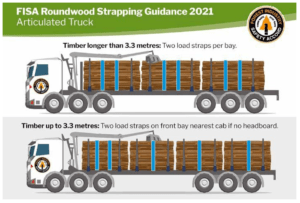Since then, the TTF have produced stickers to be placed in cabs as a reminder of the new requirements for strapping. We recently did a survey at a weighbridge for half a day and found that:
• Most drivers had knowledge of the new requirements and had received either a copy of the poster or stickers as a reminder.
• Around 50% of lorries coming across the weighbridge were correctly strapped in line with the requirements of the Code of Practice 5th Edition.
• The 50% of drivers that weren’t strapped to the 5th Edition requirements were committing to following the requirements in future.
In the past year we have covered both strapping and work at height on lorries, both things that should be covered in every haulage company’s risk assessment for the operation of their fleet. Drivers must be briefed on the requirements of the risk assessment, including strapping and work at height, and have whatever equipment is necessary to follow the controls available to them. We are not seeing this in every case.
Learning Points:
• Haulage companies must have risk assessments for their operations, including strapping, work at height, and lone working.
• The controls identified should follow the 5th Edition of the Code of practice for the Haulage of Round Timber.
• Drivers must be briefed and equipped to follow the risk assessment and keep themselves safe and must then implement the controls.
• Compliance will continue to be monitored.





